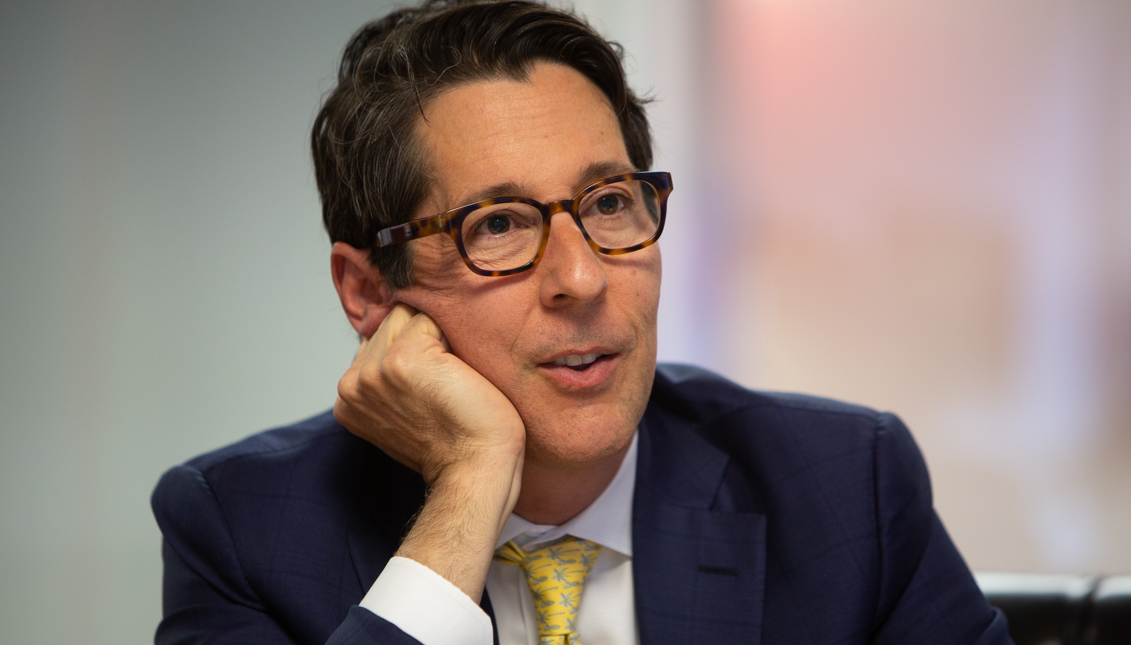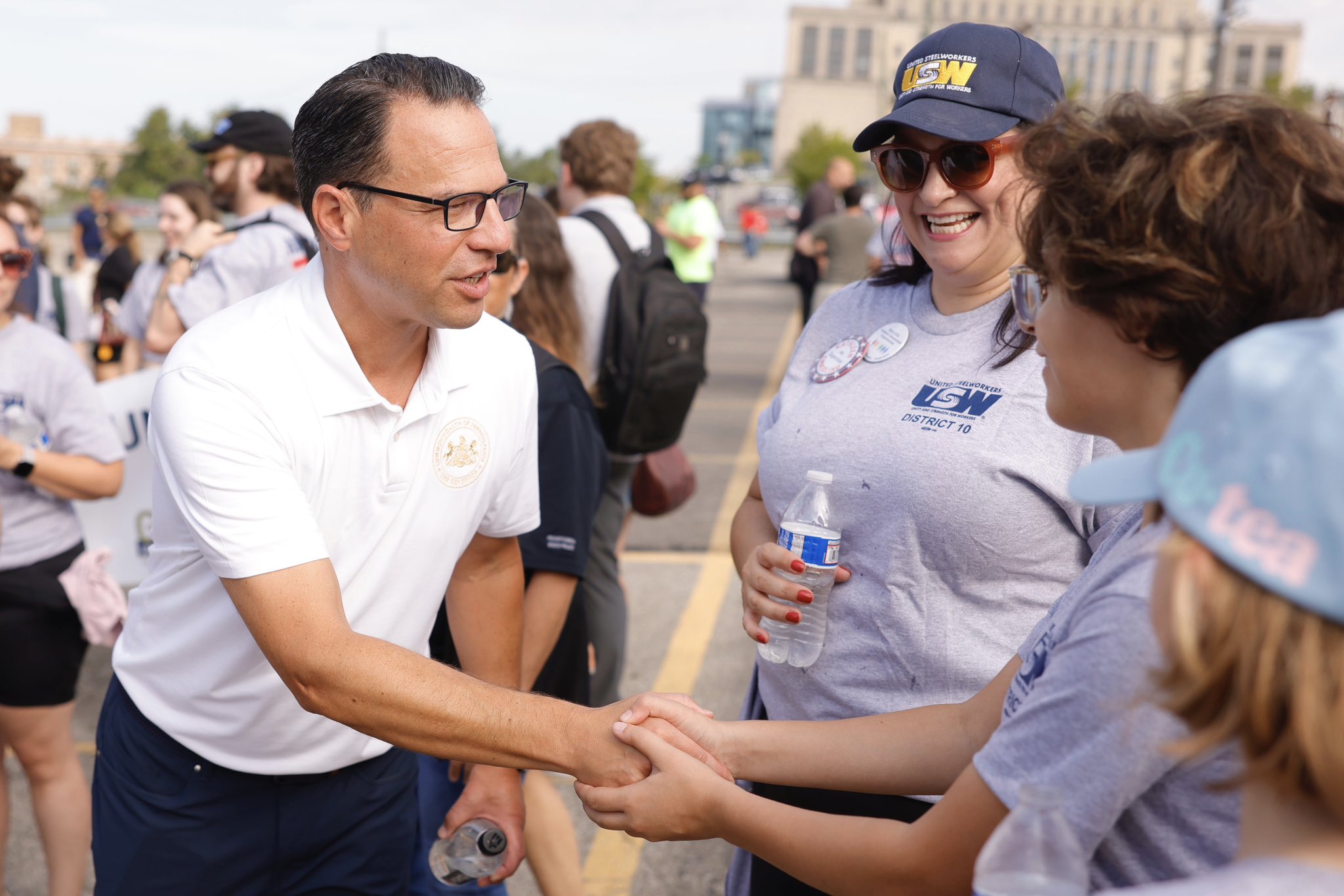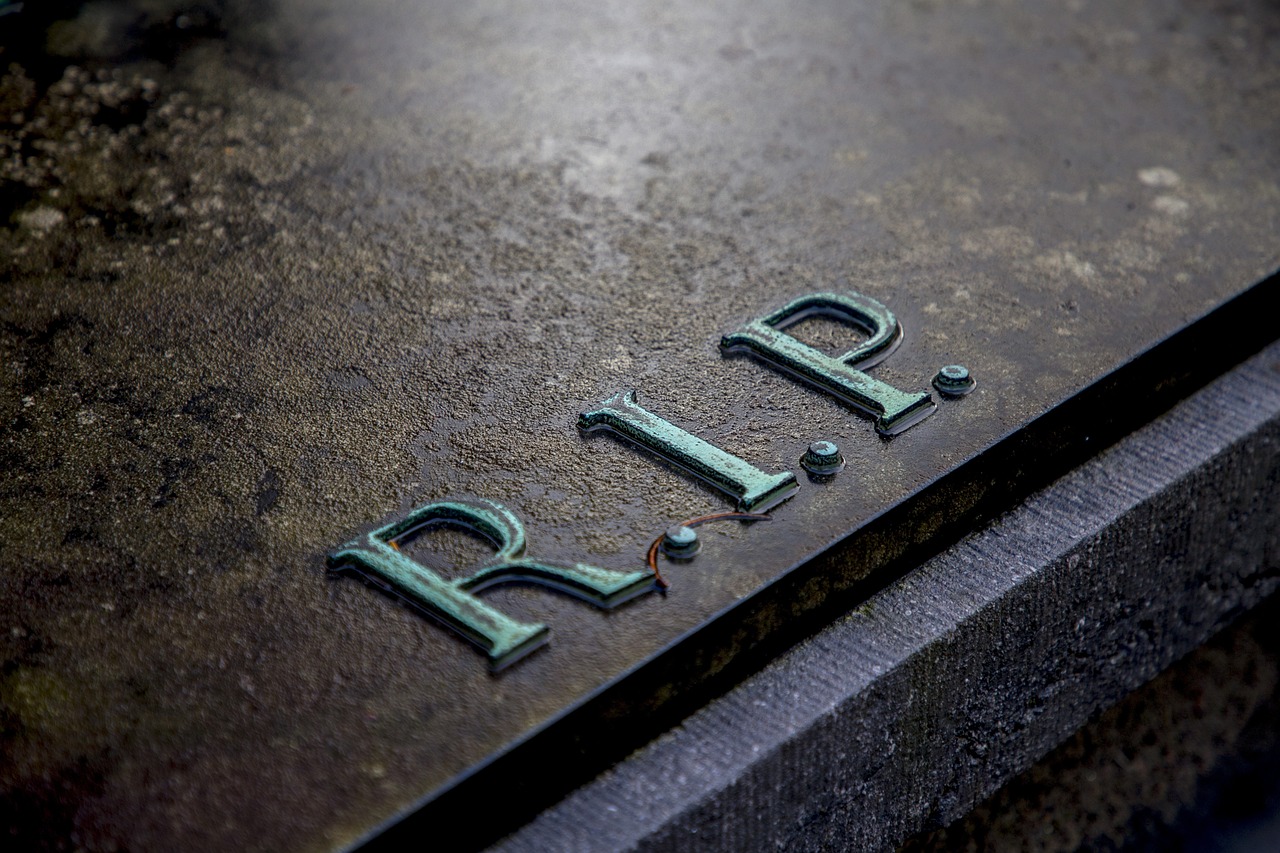
Treasurer Joe Torsella: Education propels the American dream
In addition to educational initiatives such as the PA 529 Program, AL DÍA News caught up with Treasurer Torsella on his concerns about the state of retirement…
Treasurer Joe Torsella, the elected custodian of Pennsylvania’s funds, is on a mission to promote higher education across the state.
“I think that that education is still what propels the American dream,” Torsella said during a visit to the AL DÍA Newsroom in July. “But the trouble is, the cost of the propellant has dramatically changed… There’s been, over a couple of decades, a pricing out of higher education in general that is just jaw-dropping.”
In fact, the treasurer said, the cost of higher education has increased by 300 percent since the 54-year-old himself began thinking about what to do after high school while median family income “has basically not changed” over the same period of time.
The effect of this disproportionate increase, Torsella said, will “be to further exacerbate this chasm of inequality that we have and to leave people priced out of the American dream.”
“I am convinced that we need to urgently find ways to make higher education more accessible,” he said.
So, the treasurer is hoping to raise awareness across the state about services that are available to help make education more affordable for people in Pennsylvania, including the PA 529 Program, which is a tax-advantaged way to save for higher education that is currently being used by less than 8 percent of eligible Pennsylvanians.
“I’ll only be happy when we get it to 100 percent,” Torsella said, adding that “the rate of 529 use in the Latino community is lower than their percent of the Pennsylvania population.”
Beginning in January 2019, a new program called Keystone Scholars, an initiative spearheaded by Torsella that garnered bipartisan support in the Pennsylvania General Assembly, will automatically deposit $100 into 529 accounts for every child born or adopted in Pennsylvania.
“This more than anything else is why I ran for treasurer. I saw that treasurers in some other states had pioneered programs like this and I was excited by it,” said Torsella, a Democrat who began his first term as treasurer in 2017. “In fact, I had my swearing in not in the capitol, but at a middle school in Harrisburg because I wanted to remember that’s why I ran for the office.”
In addition to education initiatives, AL DÍA caught up with Treasurer Torsella on his concerns about the state of retirement savings in Pennsylvania, as well as his office’s role in supporting Pennsylvanians with disabilities and reuniting unclaimed property with owners.
(This conversation has been edited for clarity and brevity.)
What is the PA 529 Program and how does it work?
529s are about 25 years old. They are unfortunately still not as widely known as they should be, and not as widely used as they should be or need to be. They are a tax-advantaged way of saving for higher education.
Let me pause and say that with higher education, sometimes we make the mistake of thinking about that as being a four-year college. It is not. It is anything after high school that equips someone for success in the job market, whether that is a four-year degree, two-year degree, a certificate program or any number of flavors in between.
But 529s are, bar none, the best way to save for college. They should be used by everyone who has a child... The role of higher education in our economy and in our individual success, I can’t stress enough.
Since the end of the Great Recession, this country has seen 18 million jobs created. Of that number, 17 million of those jobs have gone to someone who holds some postsecondary degree. 95 percent.
Compared to past cycles of boom and bust - the economy rises then falls and then rises and then falls - what we’re seeing is a change. The risk for people who don’t have some kind of postsecondary education, they won’t see another recovery. We need to really emphasize and underscore the importance of this message because the consequences of having a degree or not having a degree are vast to us as individuals and families, but also to us as a state.
The average earnings of someone with a postsecondary degree are about $1 million more across a lifetime than someone who does not have that degree. With 529s, you can make a deposit, which is tax-deductible. It then is invested and the earnings grow tax-free, and it can be taken out tax-free for any educational expense, and that is quite broad. It’s not just tuition payments. It includes many other things these days.
And, the important thing to note is that they are for everyone, that even a modest amount of savings can make a huge dent and can be meaningful by the time a child reaches the age of high school graduation.
There’s, I think, a myth that 529s started as something for people who have financial advisers and wealth. If a family puts aside $25 a month, through the growth of the investment, even saving that amount, those funds will grow $10,000 by the time that young newborn is ready to attend something after high school.
As someone who just welcomed their first grandchild, I understand better than ever before the power of, the magic of compound interest in making a dent in our education cost. We’re sitting here in Pennsylvania, which has the distinction of being the state with the highest student debt load in the country. Our graduates, we are saddling them with an average of $35,000 in loans, which is the highest amount in the country.
So whatever we can do to reduce that burden is worth doing. And 529s are a great way of doing it. Every dollar saved is a dollar that doesn’t have to be borrowed, and is money that can go to equipping that young Pennsylvanian with getting the skills they need to succeed in the 21st-century economy.
What is the significance of the Keystone Scholars Program?
We recently proposed what is a pretty innovative approach to make saving for higher education universal, and to see that, we announced a pilot program that was in six counties that was funded with philanthropic contributions, but we also announced bipartisan legislation that would make this statewide, universal and permanent... I’m proud to say that it passed in the budget legislation a few weeks ago.
Starting January 1, 2019, the Keystone Scholars accounts will be available for every child born or adopted in Pennsylvania. It will be a starter deposit into a 529 account of $100, which, invested, will grow over time but more importantly, hopefully will encourage families to start saving and encourage program partners, in some cases, to match family savings.
Then we can really, I think, dramatically change thinking about higher education and savings rates for Pennsylvanians, and for me, most importantly, most powerfully, we can send a message and make a statement about who we are as Pennsylvanians, that we have high expectations for every child, and that we are a community that believes in every child.
A few small states have experimented with this, but we’re the first large state to do this and create this universal baby bond for higher education. I think it’s tremendous news. We have to get the word out about it.
The genesis of the Keystones is some really interesting research that says if a child has a savings account when that child is born that is earmarked for higher education that they are seven times more likely to go to and graduate something after high school. And that is unrelated to the family’s educational level, the family’s income level, or even the amount in the account. This research shows that it holds true even for modest deposits, which $100 is.
Are there any limitations if parents don't have documentation because of their immigration status? What is the system like for those families?
This is meant to be universal to every child born or adopted here. One of the great things about it is that it is universal.
Do PA 529s or the Keystone Scholars Program put a burden on Pennsylvania taxpayers?
They don’t, and that’s one of the reasons this was a bipartisan accomplishment. We designed this so it wouldn’t put a burden on taxpayers.
We funded the pilot out of charitable contributions, including from the Neubauer Family Foundation here in Philadelphia, the Board of Directors of FIA, three western Pennsylvania foundations… They all stepped up and said, “We believe in this research.”
We designed the permanent program to be funded also with investment surplus earnings in the guaranteed savings plan that will stay within that plan and really help us build the health of that plan, but there’s no claim on the general fund. Obviously, I think that’s one of the reasons we were able to succeed in doing it.
Having said that, I should say I don’t view investment in higher education in the state budget as money badly spent. I think if you look back at the Great Recession, we pulled back our support of higher education fairly dramatically.
We’re among the states that are the slowest to be making that up. We have not made that up yet, and when state institutions are raising their costs at levels higher than inflation when higher education’s become so indispensable, when our state education rate of higher education is lower than other states that we compete with… I could make a very compelling argument to you that a higher level of state investment in higher education is not just a good idea, it’s overdue and necessary.
But to answer your question, no.
Can you discuss the state of retirement savings among Pennsylvanians?
Usually, when politicians are talking about pensions, it’s a conversation about the status of public sector pensions. Meanwhile, what’s been happening is the economic landscape has been changing dramatically and the old defined benefit pension that used to exist in many places doesn’t exist anymore. The career trajectories that defined the 20th century are different in the 21st. People will likely have a series of different jobs.
And, by the way, we’re aging, which is a good thing, especially when you’re looking at it from my end of the spectrum. But Pennsylvania is aging. We are aging more than other states.
What we know is that most people who are saving for retirement have too little money, nothing close to the amount saved that retirement planners think they should have. I think the average for near-retirement households is around one year of income, and it should be several times that amount. So families that know to save aren’t saving enough.
What I think is maybe just as worrisome is that there are a huge number of people that are working who have no way to save at their place of work. And human nature being what it is, if you don’t have a way to save where you work in practice then you don’t save.
I spent a couple years working for myself when I was younger, and I think of the five or six years there was only one — maybe two of them but not more than two — where I actually put some money aside for retirement. And I’m sophisticated about this. I’m now the treasurer.
So we have 2 million people in Pennsylvania who are working but have no way of saving and, by the way, this disproportionately impacts, among others, the Latino community.
So, like the Keystones, a couple of states have been thinking about what we can do about this and I think there is a solution out there. It involves setting up a portable IRA to give those folks access to a way to save at work. It does not ask businesses to do anything except process a payroll deduction.
Simply by processing a payroll deduction and making it automatic, and having it set up so you can opt out but you’re enrolled by default, you can get something like 90 percent of those folks saving, and then this account would follow them around.
It would involve, basically, the state setting up a plan similar to 529s, which we would turn to the private sector to run but we would administer. There wouldn’t be any liability for employers but it would mean that if you’re working in Pennsylvania, you would have a way of saving where you work, and for those 2 million people, suddenly, they would be covered and they would have something follow them from job to job, as most of the folks who are younger are going to have several jobs and some of them may be in places that have no 401ks or pension plans.
For businesses, it actually would be an asset because we know that businesses often lose people to places that do have retirement options.
I convened a private sector retirement security task force in Harrisburg, invited representatives from business, from labor, from stakeholder communities like the AARP, and, crucially, bipartisan representation from the House and the Senate on the finance side.
We first determined the scope of the problem. Second, we looked at what it’s costing the government of Pennsylvania, the fact that Pennsylvanians are unprepared for retirement.
The number was eye-popping. It’s currently about $700 million a year in cost to the commonwealth, to the taxpayers from that savings gap. That is a meaningful number and a meaningful burden. That goes up over the next 15 years. Over the whole of the 15 years, it’s about $14 billion.
So if we could create a vehicle, which would involve the state administering an auto-enroll program that would enable 2 million people simply to start saving their own money, it would give them an easy at-work, no fuss, no muss way of doing it that would help small businesses.
Is your office doing any work to translate that into legislation or policy?
We are. So the task force had its hearings and it’s continuing its work. I should say that when I’m speaking about this, they’re my own views on where we should go. But my hope is that the task force will be making some recommendations that are some common ground, common sense things that we hope will be translated into legislation that would authorize us to do something like that.
RELATED CONTENT
I will tell you that’s not the only model out there. There are other ways. I will be disappointed if we don’t do something. I don’t think that’ll be the case. I think there’s enough concern and interest in this on both sides of the aisle that we’ll be able to make some progress.
How does the PA ABLE Savings Program benefit Pennsylvanians with disabilities?
It’s a tax-advantaged way of saving that is administered much like a 529 program. And, by the way, like a 529 program, it’s much easier to open an account than most people realize and it should not be seen as mysterious or intimidating.
But the reason for it is that we had a terrible and perverse system of incentives where we essentially penalized disabled Pennsylvanians from saving because we wrote into regulation that for them to access benefits, they essentially had to make themselves poor. They couldn’t have more than $2,000 in assets.
And we essentially said, “We’re going to stop you from doing what we think everyone else should do, which is build some financial security for yourself.” It was a terrible system that encouraged people to spend their way into poverty. It resulted in completely paradoxical and heartbreaking situations.
We would hear, for example, from people who had a disabled child saying they’d been advised by lawyers to write the child out of their will because, to give the child any inheritance, would jeopardize the assistance they need.
By the way, this is a large population. We think the number of people who could benefit from an ABLE account is on the order of about 700,000 Pennsylvanians. These are people whose talents we need as a state, and these are people who are entitled to have what the rest of us have, which is an ability to save our own money and build our own financial security.
So recognizing this, led by Senator Bob Casey, Congress a few years ago decided to empower states by setting up ABLE accounts.
Pennsylvania launched in April of last year along with a consortium of other states, and I’m happy to say, in that group of states, we are by far the leader in number of accounts opened and dollars being saved. We have about 1,400 Pennsylvanians who are using ABLE accounts, and about $8 million in assets being saved.
And, like 529s, the money can grow tax-free in the account. There’s also investment options. There’s also a simple checking option, because this is a need that many Pennsylvanians with disabilities have.
And we’ve done a lot of outreach around the state on this. We’ve done a lot of outreach with the disability advocacy community, who’ve been amazing partners in this. We’ve made it even better. We got the legislature, through bipartisan leadership, to make the contributions to ABLE accounts tax deductible.
Going around the state and hearing what people are using this for has been really gratifying to me, personally. We were at an event where folks have service dogs who do incredible things in their lives. Those dogs, of course, require a significant amount of training and are expensive. We heard from people who were using their ABLE accounts to save for that.
We heard from people who were simply using it to achieve a sense of financial empowerment that most of us take for granted. For example, there’s a young man who could only manage by carrying cash, which was difficult for him, and simply the checking account, having the ability to manage with an ATM account like every other Pennsylvanian, has made a huge difference.
We had an event in Pittsburgh, where there’s a wheelchair rugby and a wheelchair basketball team. I got to play, actually, for the wheelchair rugby team, which was really cool. But these specialized wheelchairs to do that, which make such a huge difference in those lives, are not cheap. I heard from people who were using accounts to pay for that.
It can pay for assistive technology. It can pay for just routine living expenses. It can pay for education. It can pay for needed adaptations to the place you live. The range of things that it can pay for is quite large, and it lets Pennsylvanians with disabilities build some sense of financial security without compromising the benefits they need.
There’s a skepticism because, for many years, Pennsylvanians with disabilities were told, “Do not, under any circumstances, accumulate assets or you will lose your ability to get benefits.” So there’s a skepticism we have to overcome. The program is in its infancy, but the number of people who could potentially benefit from it is quite large so we want to get the word out about this.
What is unclaimed property and how does your office reunite this property with owners?
Unclaimed property is any asset, typically financial but not always, that has gotten lost in the system and for which an owner can’t be found. And instead of that asset remaining with a business, it reverts to the unclaimed property program, and our mission is to reunite it with its owner.
One in 10 Pennsylvanians has unclaimed property, which is a figure that most people don’t know. It’s quite common, and the amounts could be substantial. The average unclaimed property payout last year was $1,500. Now that average is driven up by a couple of large claims, so the median is more like a few hundred, but still, that’s real money.
And it exists not just for individuals, but for organizations. Notably, on “Good Morning America,” we gave back $90,000 to the Children’s Hospital of Philadelphia, which it didn’t know it was entitled to.
Collectively, we have more than $3 billion in unclaimed property that could be claimed annually. Some of that is very old and is likely never to be claimed, although there is no statute of limitations. If the unclaimed property is from 20 years ago, you’re still entitled to it. But every year we get new reports. Last year we gave back a record amount ($254 million) to Pennsylvanians.
A good bit of that was to institutions and organizations, not just to people. And most of it was financial but not all of it was financial. We have a vault in Treasury’s basement which originally existed when the state did business taking in cash receipts, but is now used to store physical unclaimed property, which includes things like coin collections, jewelry, collectibles and diamonds.
The most poignant piece of it, to me — and we’ve done a lot of work on this — is that it includes about 500 military decorations that have ended up in treasury over the years, including just extraordinary things like Purple Hearts and Bronze Stars, and we have significantly increased our efforts to return those on my watch. We have found honors for a number of those that had been in the Treasury’s possession for many, many years, including some really extraordinary cases.
There was a medal that was inscribed from a father to his son and we reconnected that with the family a couple of weeks ago. There have been some World War II Purple Hearts that we’ve reconnected with their owners. It’s been very gratifying.
So we end up with some physical things, not just money, but most of it is money.
One of the most powerful examples was from a woman our staff found two claims for that amounted to about $2,500 together. She was having medical treatment the following week that she had no idea how she could pay for until this happened. We get stories like that all the time.
The average claim being $1,500, that’s — in the best case — a vacation you didn’t think you could afford. That’s also books for a couple of semesters. That’s taking care of the check engine light that just went on and you didn’t know how you could manage. That’s a few months of utility or mortgage payments.
If you’re having a tough time, that’s real money.
(To find out whether you're entitled to unclaimed property in Pennsylvania, click here.)











LEAVE A COMMENT:
Join the discussion! Leave a comment.